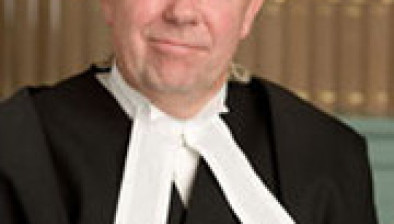Court of Appeal: State successfully appeals €158k damages awarded to Revenue employee who tripped at work
The State has successfully appealed against a finding of liability in a trip and fall case which resulted in an award of over €158,000 in general and special damages.

About this case:
- Citation:[2020] IECA 9
- Judgment:
- Court:Court of Appeal
- Judge:Mr Justice Brian McGovern
Overturning the High Court’s finding that the State was liable due to movement in concrete slabs which created a trip hazard, Mr Justice Brian McGovern commented that there was no credible evidence to support the liability finding, and that the trial judge “fell into error” in filling in the “evidential gaps” in the case.
Background
Geraldine McHugh worked as a clerical officer with the Office of the Revenue Commissioners in Cranmore, County Sligo. She was due to retire in January 2019, however, on 1 September 2014, Ms McHugh tripped and fell while crossing a courtyard area adjacent to her place of work. The fall caused serious injuries including a significant injury to her thumb and wrist, ultimately causing her to take early retirement in September 2016.
Ms McHugh submitted that her injuries arose by virtue of a dangerous and defective condition of the courtyard area at the State-owned property, and by virtue of what she says were dangerous and defective condition of the concrete pavers.
High Court
The State parties filed a full defence and contributory negligence was pleaded. The incident was captured on CCTV from which it was possible to pinpoint precisely where Ms McHugh fell, in fact the CCTV footage established that the place where Ms McHugh claimed to have fallen was not the same as the actual location where she fell.
Having considered the evidence, Ms Justice Bronagh O’Hanlon said the following at paras 68 – 70 of her judgment:
- “Notwithstanding that there is a dispute about the exact slab on which the plaintiff tripped and although the plaintiff may not have correctly identified the particular slab, this witness was very sure that the plaintiff tripped on this paving of particular relevance is his finding that the joints on the paving were not visible through all the frames he viewed and his opinion is that the footage does not show any defect because of definition. His findings were of a significant trip hazard at the location of the photographs. His finding on viewing the original digital footage was that a range of techniques had been used and that the images were slightly enlarged and darkened and that there were 50 frames per second, sixteen cameras that a lot of detail was missing. On the balance of probabilities, the plaintiff’s toe snagged consistent with a raised lip of a concrete paver. This was reasonably foreseeable in all the circumstances.
- The court notes that the defendant’s engineer accepts overgrown moss or other vegetation as being present between the slabs. The court does not accept his suggestion that the plaintiff’s very flat sandals tied with Velcro contributed to the accident. While the defendant’s engineer Mr. O’Brien notes that the plaintiff had a mobile phone and/or a shoulder bag and/or was walking at a brisk pace it seems to this Court that these are not crucial as to whether she was going to trip or not. The type of paving is relevant and the type of video evidence is relevant. The court finds that the accident happened has described by the plaintiff, even though she may not have pinpointed the exact slab and is explained her engineer.
- This Court therefore finds that the plaintiff was exposed to a risk of damage or injury of which the defendants were clearly aware. They also failed to take any or any adequate measures to ensure that the place where the plaintiff had access to and egress from her work station, was safe. The defendants are in breach of the Safety Health and Welfare at Work Act, 2005 and s. 8 thereof, in particular the design provision and maintenance of the locus of the accident ought to have been kept in a condition which was safe and without risk to health.”
Finding that, by the nature and type of slabbing used, there was movement in the slab which caused the accident; Ms Justice O’Hanlon found in favour of Ms McHugh, awarding her €80,000 for general damages and €78,864 for special damages – totalling €158,864. Ms McHugh was also granted an order for costs.
Court of Appeal
Appealing against the findings on quantum, the State parties complained that the general damages awarded were above the guidelines set out in the Book of Quantum. Further, the State complained that Ms Justice O’Hanlon awarded the full claim for loss of earnings in circumstances where Ms McHugh conceded that she took early retirement in 2016 because of a back complaint and not the injuries sustained in the accident. Although accepting that Ms McHugh may have sustained some injury to her back in the fall, her own surgeon conceded that there were long term changes to her back which were unrelated to the accident.
On Ms Justice O’Hanlon’s findings on liability, the State parties appealed having regard to what was established from the CCTV footage available in evidence.
Having regard to the fact that the CCTV evidence presented in the High Court did establish that Ms McHugh had identified the wrong locus of the fall, Mr Justice McGovern explained that the engineer for Ms McHugh prepared his report for the wrong locus and accepted under cross-examination that there was no tripping hazard at the place where she actually fell.
Explaining that the conclusions reached by Ms Justice O’Hanlon on liability were based on the engineer’s comments that the snagging of Ms McHugh’s toe was consistent with a raised lip of a concrete paver, Mr Justice McGovern said that this conclusion was “against the weight of evidence”. He said that Ms Justice O’Hanlon “adopted the fallacious thesis” of Ms McHugh’s engineer that: (i) Ms McHugh fell over; (ii) she must have tripped; (iii) if she tripped, there must have been a trip hazard (even though none could be identified on inspection) and (iv) if there was a trip hazard, there must have been negligence.
Commenting that it did not necessarily follow from such a fall that there was a trip hazard, Mr Justice McGovern said “[e]veryone’s experience of life is that people can fall in the absence of any specific hazard” and that Ms Justice O’Hanlon “fell into error” in filling in the “evidential gaps” in Ms McHugh’s case.
In circumstances where Ms Justice O’Hanlon “erroneously considered that the evidence satisfied the burden of proof on [Ms McHugh] in circumstances where the evidence fell far short of doing so, to the extent that it could be said that there was no credible evidence to support the liability finding”, Mr Justice McGovern said he would allow the appeal.










